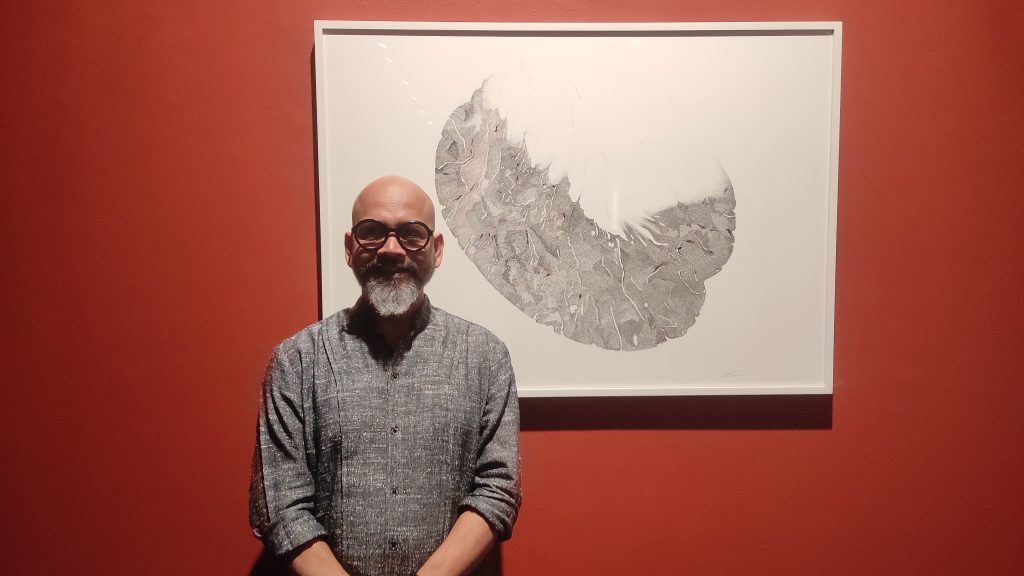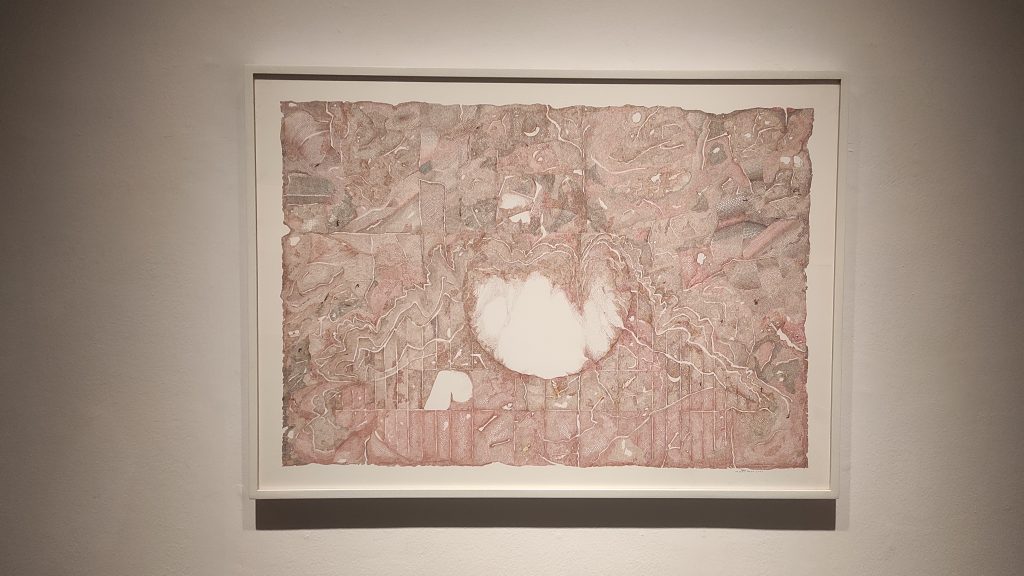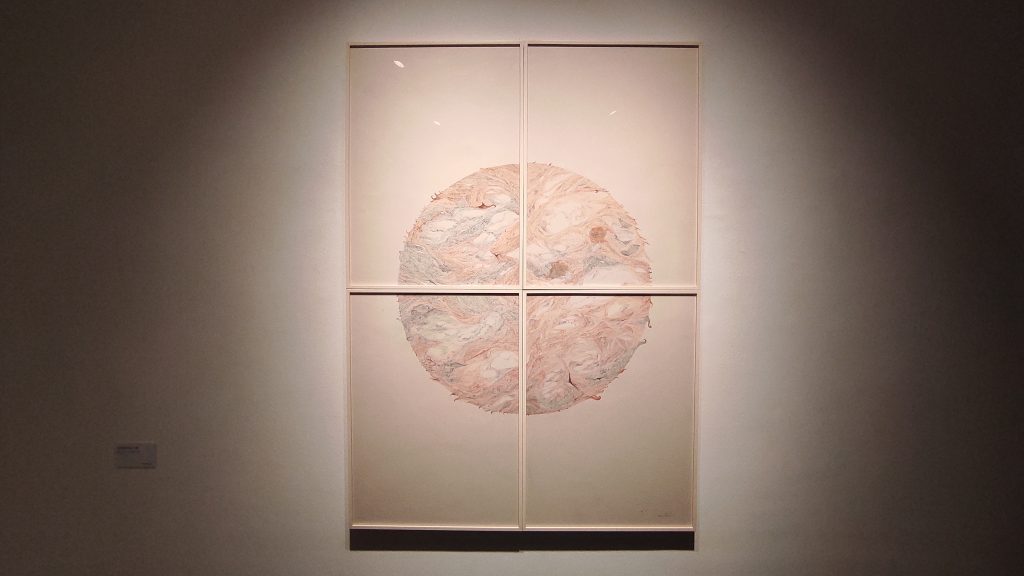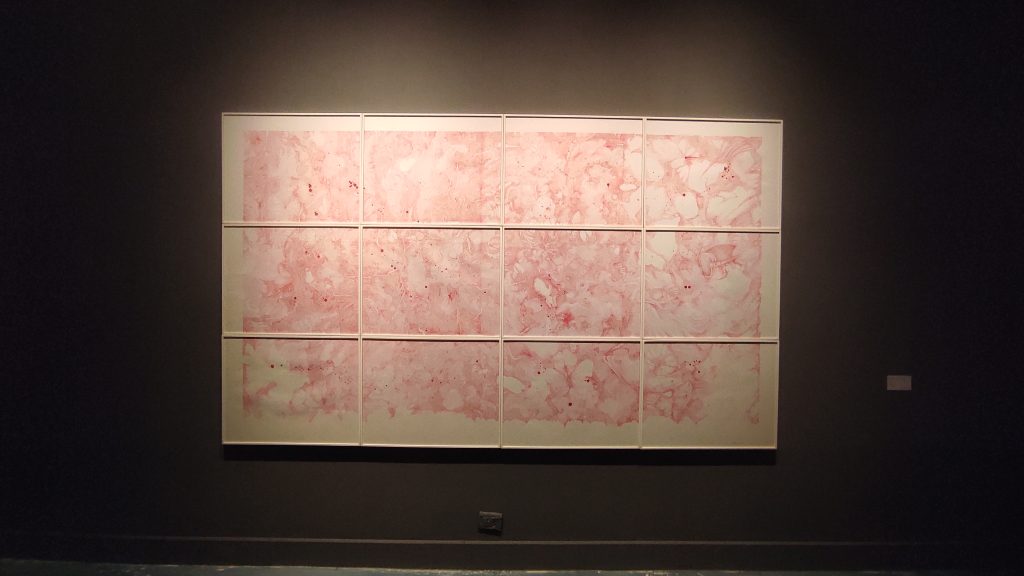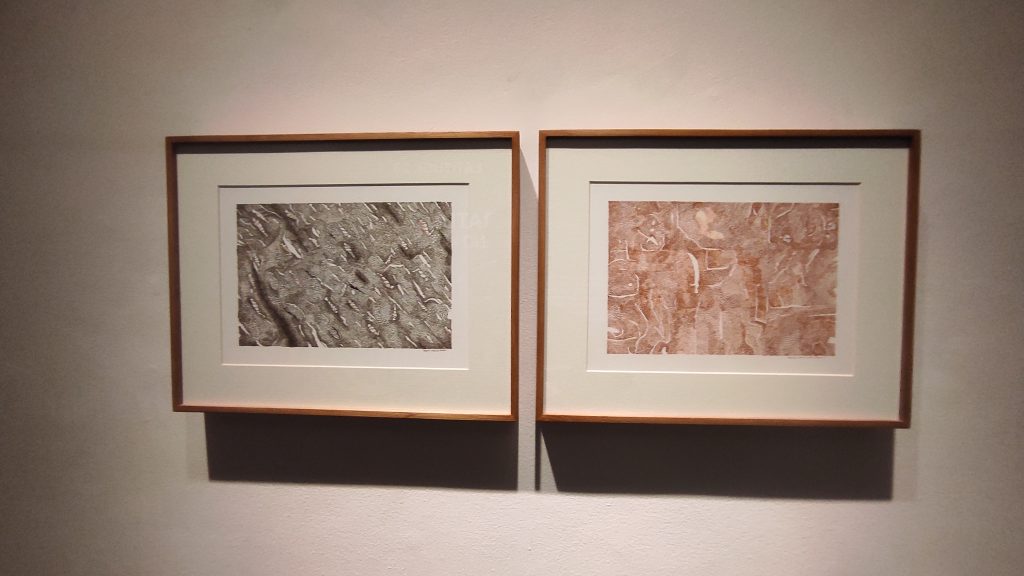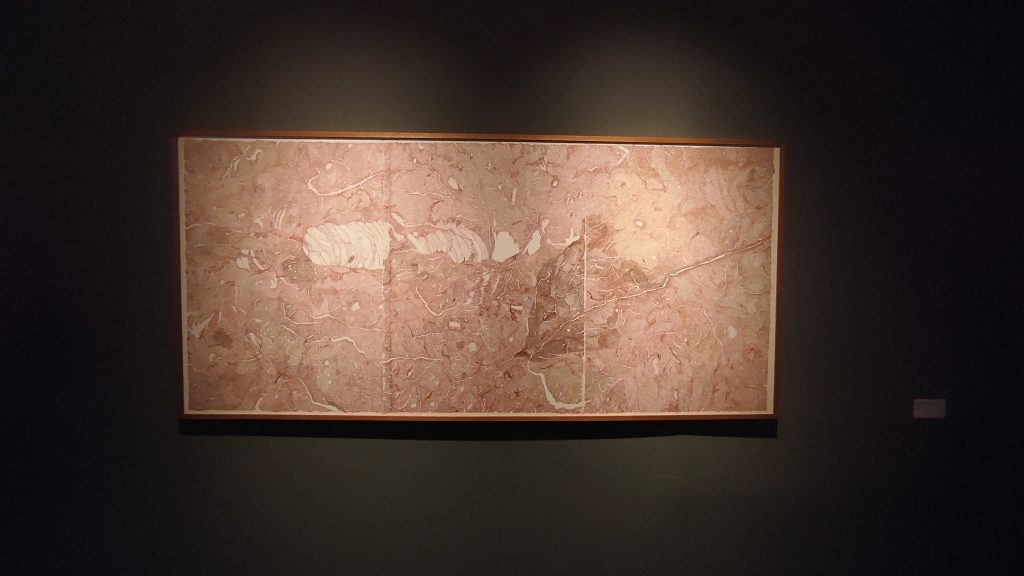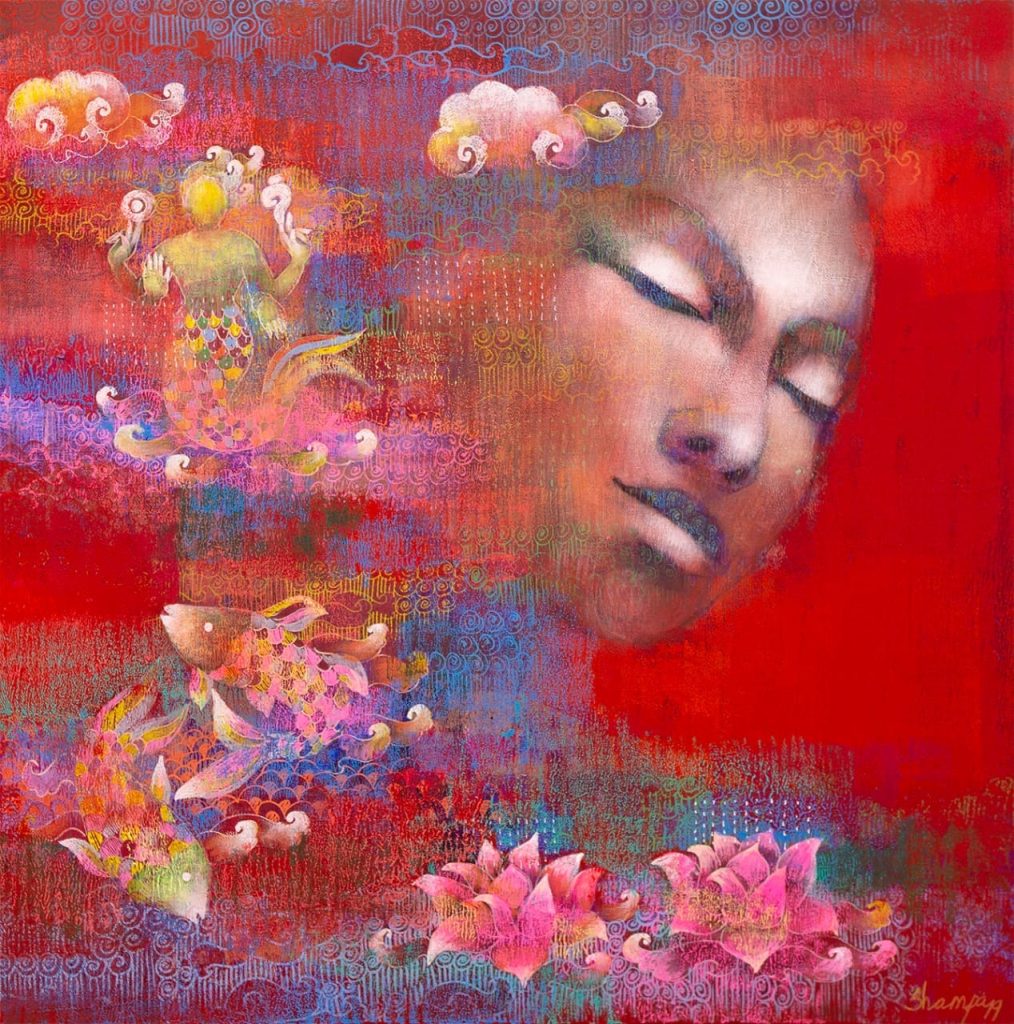Everything is visually magnificent and highly detailed in a newly opened exhibition by Latitude 28 called, “A Bend in the River.” River is used as a metaphor for everything that recreates memories of artist Pratul Dash in all his works which is an amalgamation of different narratives that come from his surroundings including the celestial realm. Several creatures could be found in his works which are painted subtly in the layers that it often creates a layer that becomes necessary to be dissected in order to comprehend the work deeply. There’s no doubt in accepting that Pratul’s work creates a whole new realm by creatively incorporating minute details and several elements all together on the canvas. His meticulous brush strokes add depth and the way he uses negative spaces creatively makes his work more unique and fascinating to look at. The visual representation captures the very essence of Pratul Dash’s extraordinary journey. The artist’s unexpected confinement in his ancestral village turned a brief visit into a breathtaking journey of self-discovery, ultimately leading to an extraordinary pursuit of his artistic talent.
Image Courtesy: Abir Pothi
When asked about his inspiration and the creative process, Pratul explained, “When you look at my works, it may look like a formation of a form but once you engage with the works, it starts revealing itself because it has layers of memories and histories, and that’s an important part of my practice. I took eight months to complete this work, if you look at my video it took four years to complete. So, it’s all about the memory, I am greatly inspired by the celestial landscapes but when you closely look at these landscapes, they talk about human bodies, anatomy, and other things as well. For me as an artist, it is very difficult for me to pinpoint one idea, because it is a journey of different time periods. There are many elements including socio-political and other things which I can’t deny as a part of my practice.”
Image Courtesy: Abir Pothi
Pratul explains his style, “I just can’t deny that there’s some abstraction in it as well, I trained as a painter in a college where British academia was very strong. So, anatomy is something with which I am extremely comfortable. Intentionally I want to get rid of image making and I’ve noticed that every ten years there are certain kinds of changes happening in my practice. I’ve been practicing for the last 24 years. While I was doing this work I felt liberated, there’s no baggage on me. All the elements, human figures are there but in a subtle manner not in a pre-dominant manner. In my earlier works, all those images in the paintings were very stuck. I just came out of that comfort zone.”
Image Courtesy: Abir Pothi
Pratul shared his view on the perceiving aspect, “I’ve witnessed all those things around me and it is still happening and I am not doing anything extra. Or is whatever I am experiencing in my day-to-day life, so the work is a twenty-four-seven global discourse, the title reveals the entire stories. So, all those narratives are not created but it is been observed and then recreated in my own way. All my work is a collective memory which I never try to incorporate intentionally but it comes naturally onto my surface because there’s a lot of frustration and crisis when we move throughout the time period. So, it comes anyhow to my practice and I don’t try it deliberately. I wish the viewers had some critical views and looked at my work deeply. I am using elements of fantasy, nostalgia, and surrealism in my work which makes it different.”
Image Courtesy: Abir Pothi
The curatorial note explains that, Translating the abstract qualities of the mind into a representation of the brain, the artist also notates his fixation on the phenomenon of memory and memory-making. These pictorial vexations, however, simply drive hone the preoccupations of the artist with the human aspect that sensitizes the brain organ – in a meaningful or destructive way, depending on how it is nurtured. We are reminded of a metaphorical allegory of evolution, one that has been and one that is yet to come. The exhibition is on view till 7th October at Bikaner House, Delhi.
Read Also:
Exploration of Lost Spaces at “Tracing the Trails of Migration” by Artist Chippa.

Contributor

